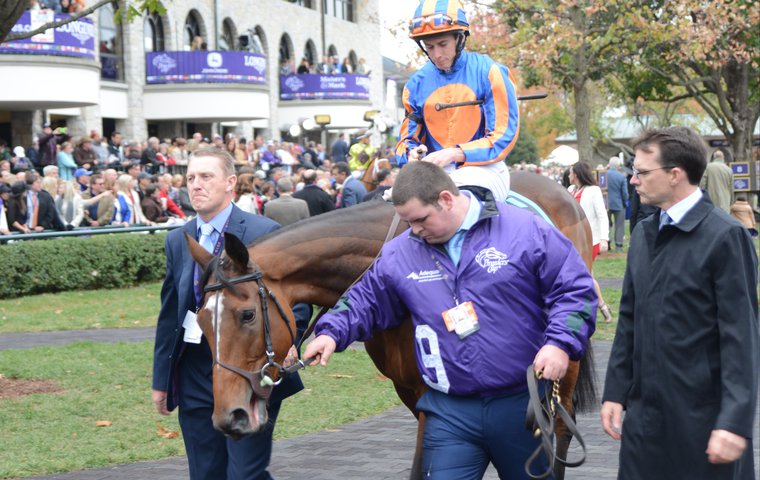
They’re finally here. After nearly three years in development, today we launch the TRC Global Rankings, a comprehensive, thoroughly tested set of standings comparing the achievements of jockeys, trainers, owners and sires the world over, the like of which the industry has never seen before. And it will be of little surprise to most observers that, for the moment at least, one hugely successful operation stands on its own at the top in all four categories.
The publication of the first set of the TRC Global Rankings, which list the top 500 in each category, represents a triumph for Ireland’s Coolmore racing and breeding empire. Aidan O’Brien has a substantial lead at the top of the trainers’ standings, their first jockey, Ryan Moore, heads the jockeys’ table, Coolmore Partners top the owners’ list, and their stallion Galileo is the world’s No. 1 sire.
But, as we explained last week, the new rankings are much, much more than an acknowledgement of outstanding recent performances in the greatest races. Aidan O’Brien is not ranked No. 1 purely because he trained the 1-2-3 in the Arc and the 1-2s in three leading 2-year-old Group 1s over the past few weeks. His position is built on a high level of achievement over the last three years.
He may be top of the pile on launch day, but others (Todd Pletcher, Chris Waller, John Gosden and Bob Baffert, for instance) have occupied that slot at various times as we developed the rankings. Indeed, Waller particularly is likely to challenge for the lead once again as flat racing in Europe and America winds down over the winter in the Northern Hemisphere and top-class action continues apace in the Australian summer.
Click on the TRC Global Rankings tab at the top of this page to see the full standings.
Click here to see the spread of individuals who have racked up the highest weekly points totals during the development period.
The system uses results in all Group and Graded races in each of the major racing nations*. That’s the last three runnings of each of around 1,450 races.
An individual’s position in the rankings depends entirely on how well their representatives have been running. Racing Post Ratings (RPRs) are used to help calculate the merit of every performance of every runner in each of the races. These merit ratings are widely accepted as a good measure of the level horses run to in the best races around the world. The more recent the race, the more it counts for. No consideration is given to the amount of prize-money won, the reputation of a race or the odds.
The architect of the new system is race analyst James Willoughby. Click on the ‘How the TRC Global Rankings work’ link at the top of the rankings page to read his detailed explanation of them.
Here are a few points to note when studying the charts:
Individuals are positioned in the standings according to their total points (bold figure in the second column from the end).
The points are derived from two numbers - Impact Value (IV) and time-decayed Racing Post Ratings (tRPR) - which are displayed in two columns in the centre of the tables.
Impact Value is a variation on strike-rate, but it is a much more stable and discerning calculation, measuring the relative strike-rate of an individual taking field sizes into account. (As a rough guide: if you have a 10 percent strike-rate in 10-runner races your IV is 1.00. If you have a five percent strike-rate in these races, IV is 0.50 and, if you have a 20 percent strike-rate, it is 2.00.)
With tRPRs, we have built in a weighting that means performances count for less as they get older. So a 120-rated performance in 2016 counts for more than it did in 2015, which in turn counts for more than it did a year earlier.
In general, horses achieve higher marks in the U.S., Britain, Ireland, France, Japan and Australia than they do in some other major racing nations*, like Chile, South Africa and Germany. So their trainers, owners, jockeys and stallions are largely higher in the rankings.
At present, for example, three of the top four horses in 2016 on Racing Post Ratings are trained in America. The other is Japanese. The top ten also contains one from France, one from Hong Kong, one from Ireland, one from Australia, three from Britain and a fourth U.S. runner.
Individuals are listed under ‘Modal Country’, which is the country where they have had the most runners and is not necessarily the one where they are based.
There is a search facility with each of the categories in the TRC Global Rankings that enables you to find any individual in the top 500, or to isolate the representatives from any modal country into one list.
You can click on any individual’s name to bring up a complete list of counting runs over the past three years.
Each of the pages includes a link to a list of all the Group and Graded winners from the previous week (Winners), plus another (Climbers) to a list of the individuals that have gained the most points in the week.
We believe the TRC Global Rankings are an industry-standard system that truly reflects the impact jockeys, trainers, owners and stallions have been making over a rolling three-year period.
Take a good look and judge for yourselves.
*The ‘major racing nations’ referred to are the 17 Part 1 jurisdictions in the International Federation of Horseracing Authorities - Argentina, Australia, Brazil, Canada, Chile, France, Germany, Great Britain, Hong Kong, Ireland, Italy, Japan, New Zealand, Peru, South Africa, UAE, and the US, plus Part 2 countries Norway, Sweden and Uruguay.
What do you think of the TRC Global Rankings? Click here to share your thoughts.
- You can use #TRCGlobalRankings to comment on the rankings on Twitter.


